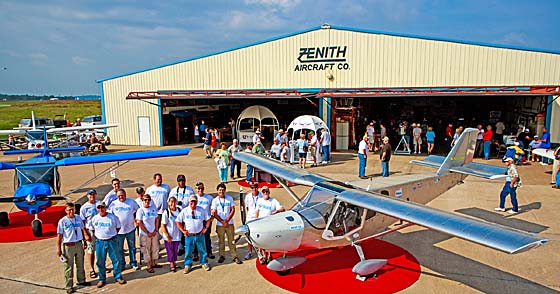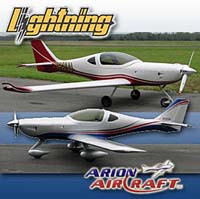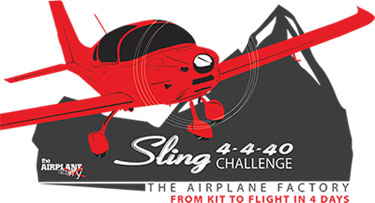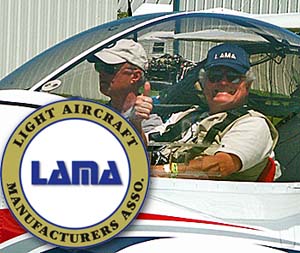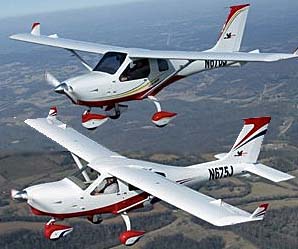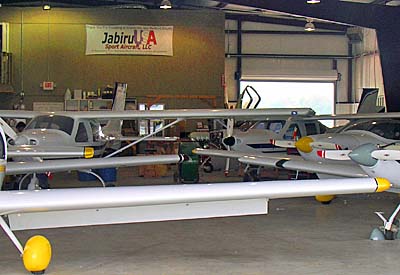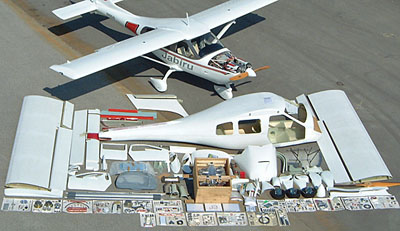
Italian company Tecnam has been a leading producer of Light-Sport Aircraft since the beginning of this newest aviation sector. Early distribution arrangements proved less than optimal so, like any progressive company, Tecnam retooled … and retooled again. In 2014 it appears they finally dialed in the correct lock combination. While keeping their friends at former distributor Heart of Virginia Aviation, they installed a factory presence at the top of the pyramid. A new factory-operated facility at the Sebring airport was announced at Sun ‘n Fun 2014. At the same time Shannon Yeager was hired to run the Florida center. As the year comes to a close, I called Shannon and asked for a summary of how things are going for Tecnam U.S. Inc. In particular I wanted to know how their 10% down program was working. When I first reported this, I found it a compelling answer to the concerns many American buyers have regarding the common need to send many tens of thousands of dollars overseas for an extended period of time.



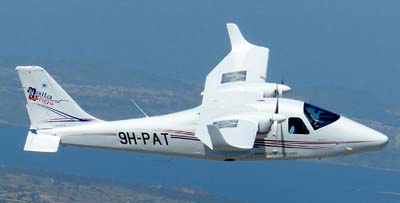
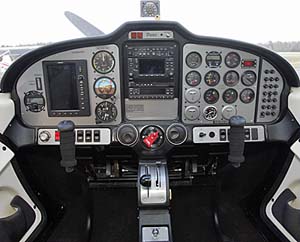
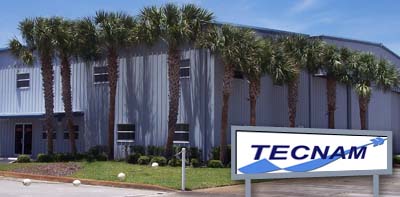
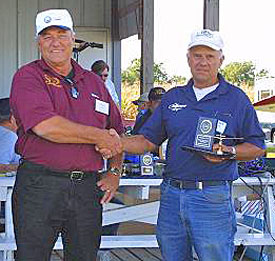


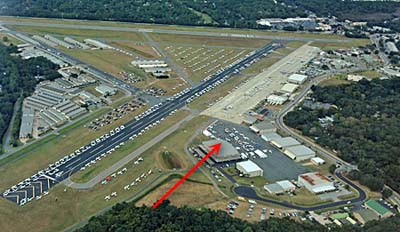
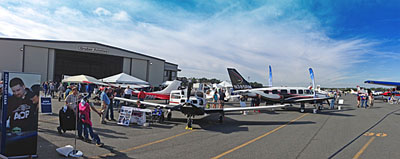
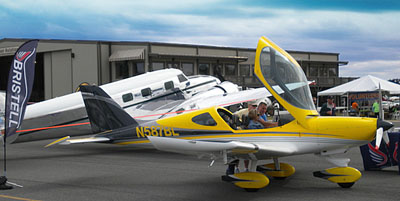


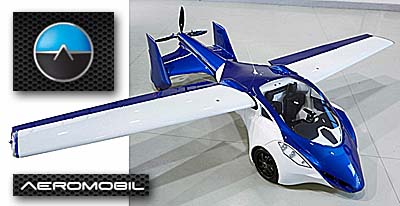
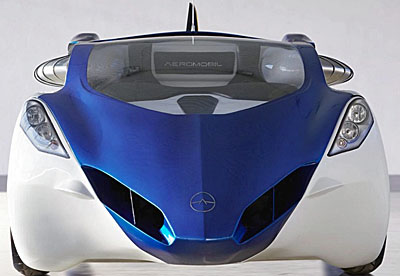
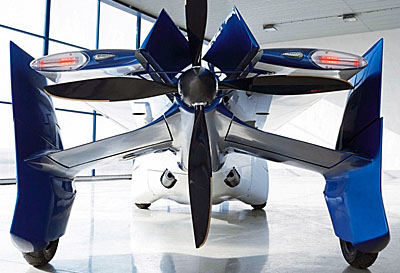


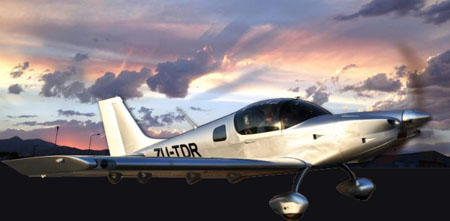


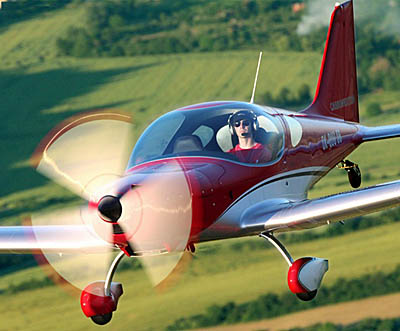

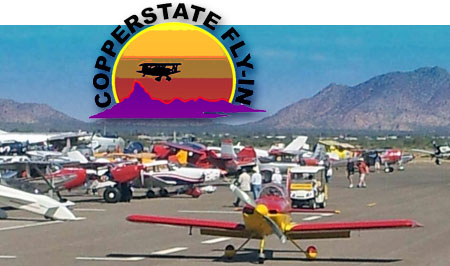
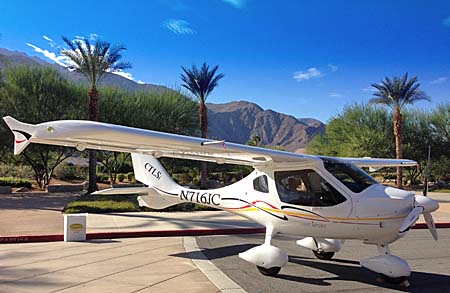
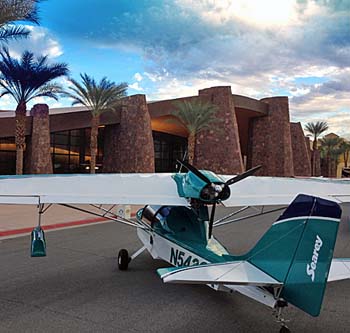
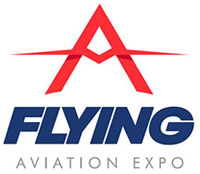

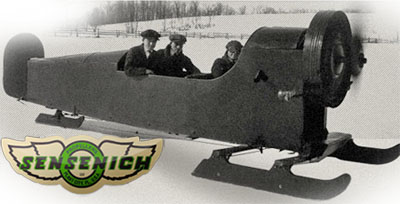
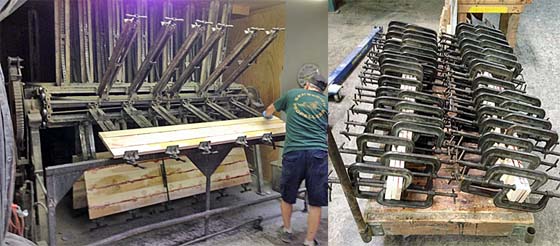

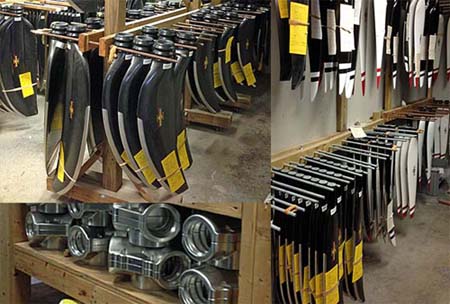
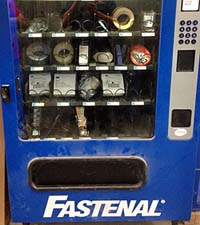

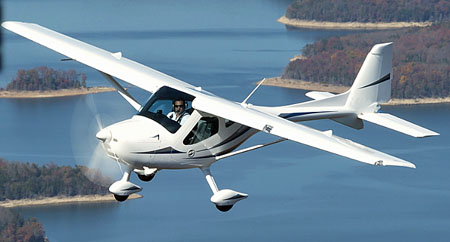
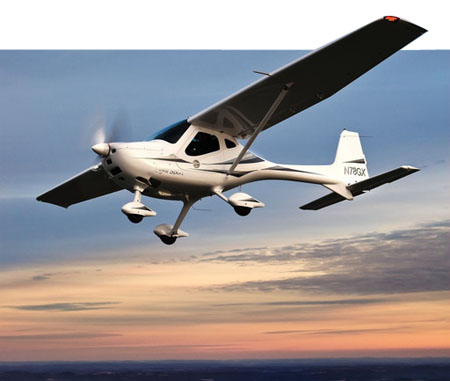
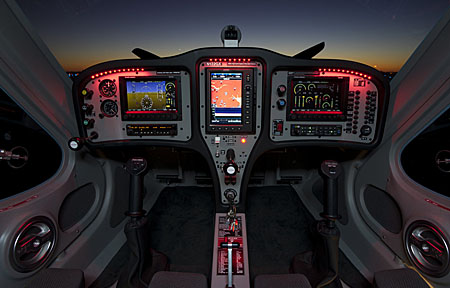

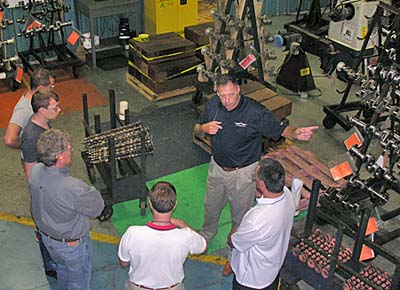
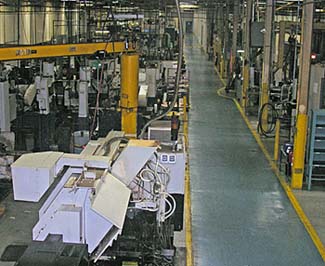 Continental has been the power for many of aviation's iconic aircraft from the unpretentious Piper Cub to the Voyager aircraft that successfully circumnavigated the globe without refueling, to a fleet of other airplanes including high-end single engine pistons such as Bonanza and Cirrus. Along with Lycoming, Continental engines are the powerplants nearly every American pilot has grown up flying. In more recent years and reflecting the uncertain future for leaded aviation fuels, Continental launched their Turbo Diesel Series engine and entered into unleaded gasoline development. Indeed their alternative fuel IO-360-AF engine (lower photo) was chosen by Flight Design for its four seat C4 as the German company expects to sell this aircraft in many countries where 100LL is unavailable at any price. Contrarily, diesel is available almost everywhere and Continental's push into engines using this fuel was surely one reason the airframe builder chose the Alabama brand.
Continental has been the power for many of aviation's iconic aircraft from the unpretentious Piper Cub to the Voyager aircraft that successfully circumnavigated the globe without refueling, to a fleet of other airplanes including high-end single engine pistons such as Bonanza and Cirrus. Along with Lycoming, Continental engines are the powerplants nearly every American pilot has grown up flying. In more recent years and reflecting the uncertain future for leaded aviation fuels, Continental launched their Turbo Diesel Series engine and entered into unleaded gasoline development. Indeed their alternative fuel IO-360-AF engine (lower photo) was chosen by Flight Design for its four seat C4 as the German company expects to sell this aircraft in many countries where 100LL is unavailable at any price. Contrarily, diesel is available almost everywhere and Continental's push into engines using this fuel was surely one reason the airframe builder chose the Alabama brand.
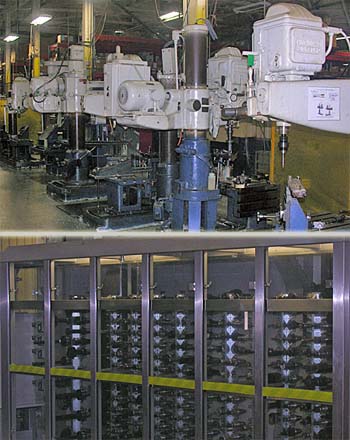 Continental is dedicated to piston engines and manufactures all primary components themselves, including crankcase, crankshaft, cylinders, and connecting rods. Every engine is hand built. Our factory tour walked us step-by-step through the process ending up in a building holding several test cells. Here, every engine is run through a full cycle in bays that once heard the howl of Mustang Merlin engines.
In the LSA space, Continental engines have been used on CubCrafters, American Legend, and
Continental is dedicated to piston engines and manufactures all primary components themselves, including crankcase, crankshaft, cylinders, and connecting rods. Every engine is hand built. Our factory tour walked us step-by-step through the process ending up in a building holding several test cells. Here, every engine is run through a full cycle in bays that once heard the howl of Mustang Merlin engines.
In the LSA space, Continental engines have been used on CubCrafters, American Legend, and 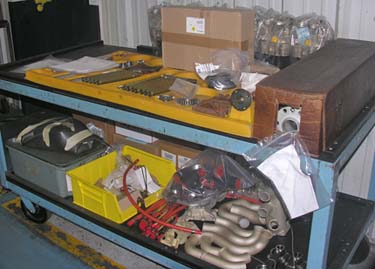 In 1966 Continental moved from their original base in Muskegon, Michigan to take over former military facilities in Mobile, Alabama. Today, the southern producer builds about ten engines a day, or an annual rate of about 2,500 engines. In the post-World War II era they once created more than 34,000 engines in a year (1946) and during the 1970s heyday for general aviation the company reported producing 70 engines a day or an annual rate of 17,500 units. In 2011, Continental was bought by Technify Motors (USA) Ltd, a subsidiary of China's AVIC International Holding Corporation.
In 1966 Continental moved from their original base in Muskegon, Michigan to take over former military facilities in Mobile, Alabama. Today, the southern producer builds about ten engines a day, or an annual rate of about 2,500 engines. In the post-World War II era they once created more than 34,000 engines in a year (1946) and during the 1970s heyday for general aviation the company reported producing 70 engines a day or an annual rate of 17,500 units. In 2011, Continental was bought by Technify Motors (USA) Ltd, a subsidiary of China's AVIC International Holding Corporation.
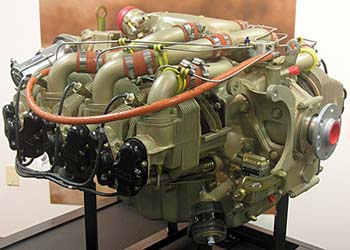 You may notice that in the photos with this article, no workers other than our tour guide are seen. The factory was functioning as we toured but the union requires that no employees are photographed while on the job. Of course, I complied with this request but it makes the facility appear unused and quiet. That's an incorrect impression, of course. To see workers at their jobs, Continental Motors has an informative
You may notice that in the photos with this article, no workers other than our tour guide are seen. The factory was functioning as we toured but the union requires that no employees are photographed while on the job. Of course, I complied with this request but it makes the facility appear unused and quiet. That's an incorrect impression, of course. To see workers at their jobs, Continental Motors has an informative 
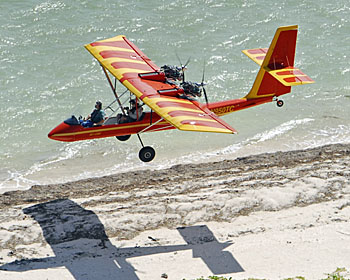
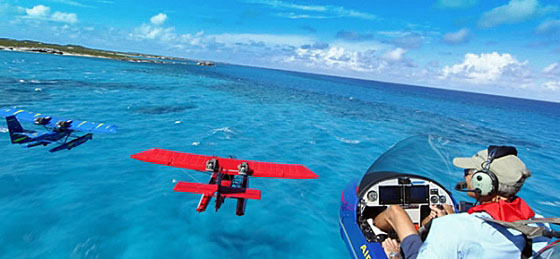
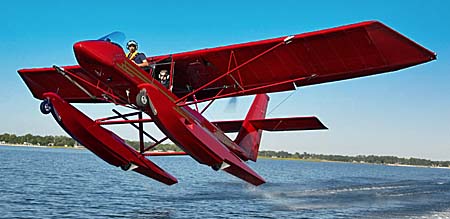
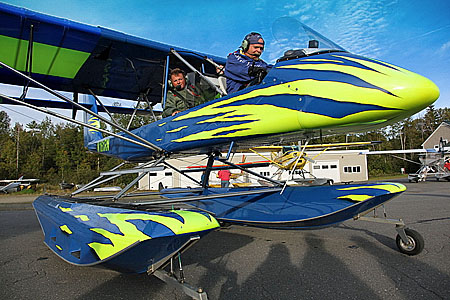
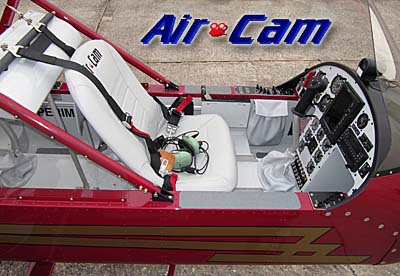

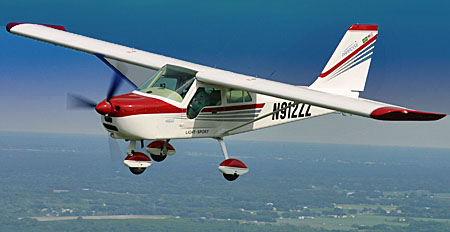
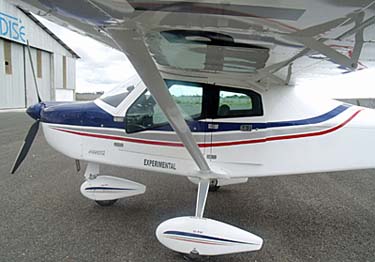
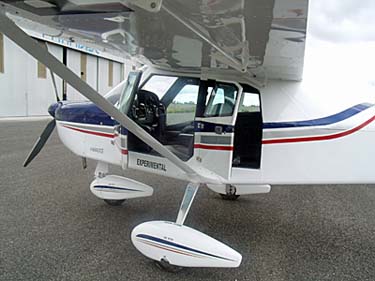
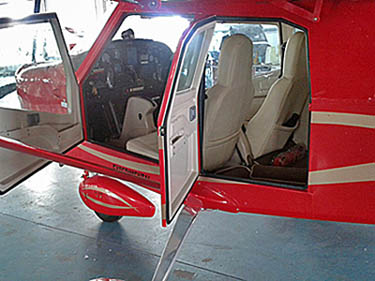

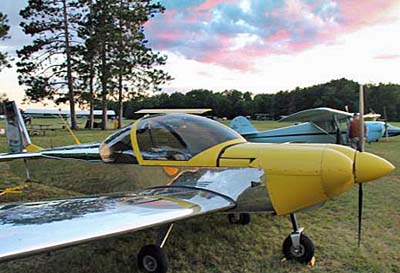
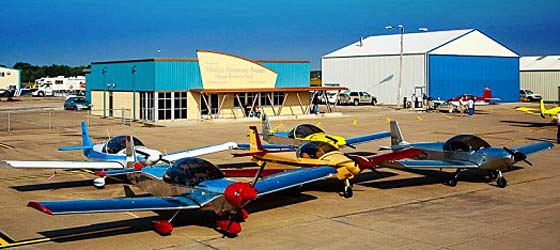
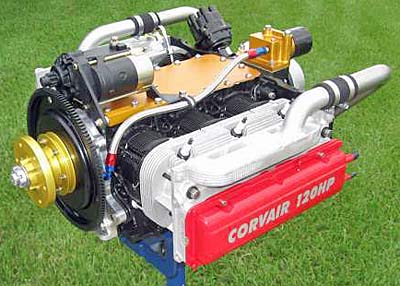
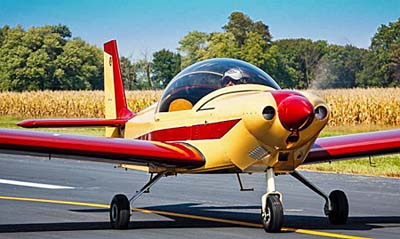
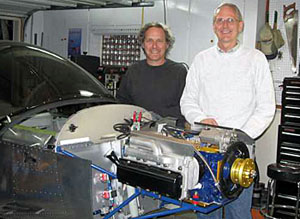

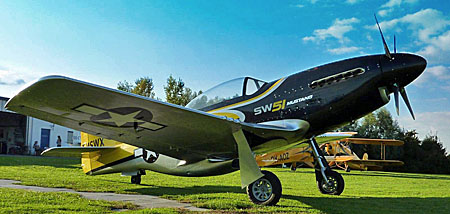 (This article has been
(This article has been 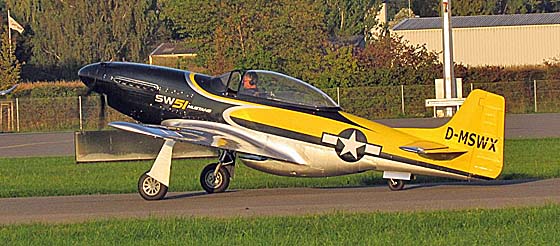 First named FK51, SW51 reproduces the 100,000 or so rivets and screws that put together an original World War II vintage P-51 Mustang. The work is all done in composite so those are not real screws or rivets but you'd have to be a P-51 mechanic to tell the difference, even when you put your hand on the skin to be sure your eyes are not deceiving you. SW51 is magnificent! "Every rivet row, every screw and every maintenance door matches the original plane," said creator ScaleWings. A reported 40,000 man hours have been invested.
First named FK51, SW51 reproduces the 100,000 or so rivets and screws that put together an original World War II vintage P-51 Mustang. The work is all done in composite so those are not real screws or rivets but you'd have to be a P-51 mechanic to tell the difference, even when you put your hand on the skin to be sure your eyes are not deceiving you. SW51 is magnificent! "Every rivet row, every screw and every maintenance door matches the original plane," said creator ScaleWings. A reported 40,000 man hours have been invested.
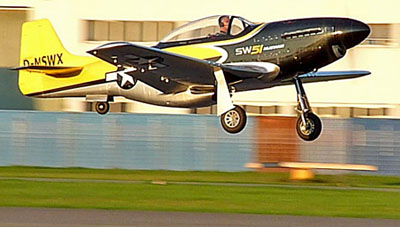 Today, Jon Hansen of
Today, Jon Hansen of 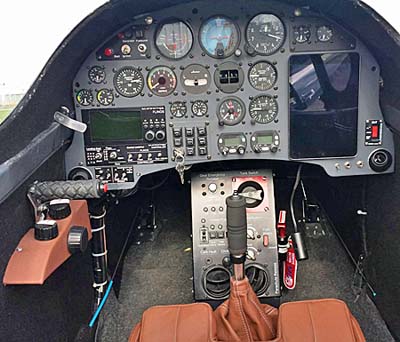 Developer ScaleWings said, "[Our] Mustang is an absolute true to original ... replica of the legendary P-51 Mustang." What was formerly called FK51 "will be produced in a complex but extremely strong carbon-honeycomb construction ... a guarantee for an extremely lightweight construction with maximum strength. [SW51] Mustang will look deceptively similar to the original Mustang in all surface details." To be sure structures and aerodynamics were professionally engineered, ScaleWings worked closely with the founder of FK Lightplanes, Peter Funk. Using his years of experience, Peter is responsible for the aerodynamic and static design, structure layout, dimensioning, load tests, flight tests and the certification of the SW-51 Mustang, said ScaleWings. This was a smart decision as today Peter focuses on engineering and new development after turning over manufacturing over to Rolland Hallam in Poland.
Developer ScaleWings said, "[Our] Mustang is an absolute true to original ... replica of the legendary P-51 Mustang." What was formerly called FK51 "will be produced in a complex but extremely strong carbon-honeycomb construction ... a guarantee for an extremely lightweight construction with maximum strength. [SW51] Mustang will look deceptively similar to the original Mustang in all surface details." To be sure structures and aerodynamics were professionally engineered, ScaleWings worked closely with the founder of FK Lightplanes, Peter Funk. Using his years of experience, Peter is responsible for the aerodynamic and static design, structure layout, dimensioning, load tests, flight tests and the certification of the SW-51 Mustang, said ScaleWings. This was a smart decision as today Peter focuses on engineering and new development after turning over manufacturing over to Rolland Hallam in Poland.
 We see that yellow taildragger Cubalikes sell briskly in the USA where many aviators have a sweet spot for vintage aircraft. Yet none that I recall inspire as much interest as the P-51 Mustang, easily one of the most highly regarded aircraft of all time. The problem is that only a very few people can afford an original and probably even less are qualified to fly them today. This gives an opening to creations like the 1990s Loehle all-wood 5151 Mustang, the Titan T-51 Mustang
We see that yellow taildragger Cubalikes sell briskly in the USA where many aviators have a sweet spot for vintage aircraft. Yet none that I recall inspire as much interest as the P-51 Mustang, easily one of the most highly regarded aircraft of all time. The problem is that only a very few people can afford an original and probably even less are qualified to fly them today. This gives an opening to creations like the 1990s Loehle all-wood 5151 Mustang, the Titan T-51 Mustang 
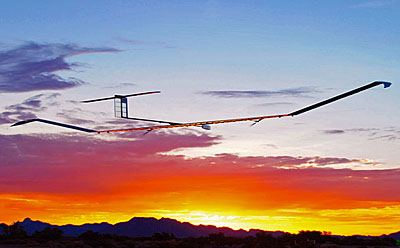

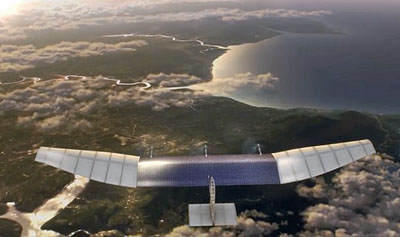
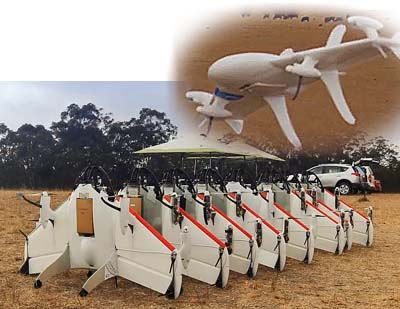

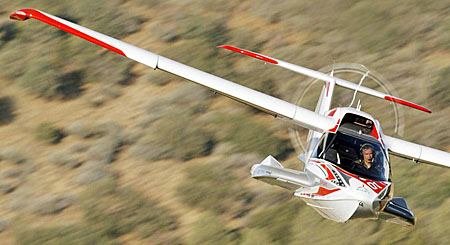
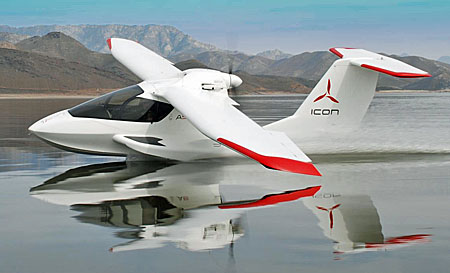
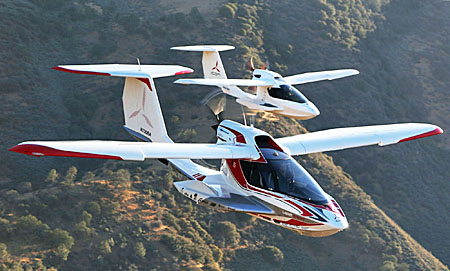
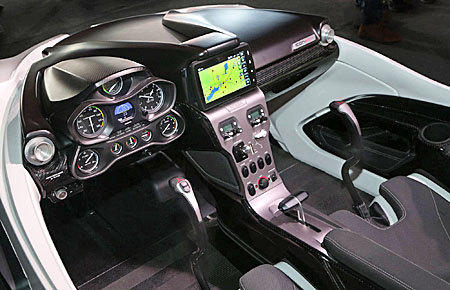

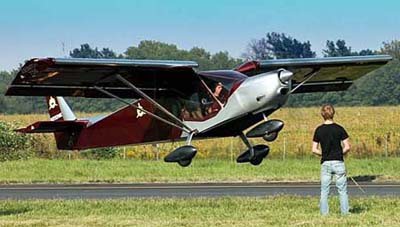 Engine suppliers must love
Engine suppliers must love 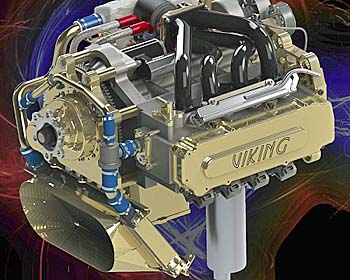 Zenith reported, "Winning performance by Jan Eggenfellner flying a Zenith STOL CH 750 powered by a Viking 110 engine." To win the competition you had to do well at both takeoff and landing, an appropriate way to show off the potential for Zenith's high-lift CH 750 STOL. Jan won the contest with a very impressive 219 feet, comprised of a takeoff at 110 feet and landing in just 109 feet. Of course, as an engine producer this was very satisfying as he flew a handsome burgundy CH-750 powered by one of his Viking engines producing 110 horsepower. As do other powerplant providers, Viking works to assist buyers with is often called a firewall forward package, sometimes containing a nose cowl that encloses the engine that can help performance. Despite some challenges beginning this company (see last paragraph), Viking has successfully installed engines on several aircraft types (nearby photo). At the Missouri Open Hangar Day event, four Viking-powered Zenith models attended including three that made the lengthy trip from Florida plus another from Ohio. Three CH 750s were joined by a low wing CH 650.
Zenith reported, "Winning performance by Jan Eggenfellner flying a Zenith STOL CH 750 powered by a Viking 110 engine." To win the competition you had to do well at both takeoff and landing, an appropriate way to show off the potential for Zenith's high-lift CH 750 STOL. Jan won the contest with a very impressive 219 feet, comprised of a takeoff at 110 feet and landing in just 109 feet. Of course, as an engine producer this was very satisfying as he flew a handsome burgundy CH-750 powered by one of his Viking engines producing 110 horsepower. As do other powerplant providers, Viking works to assist buyers with is often called a firewall forward package, sometimes containing a nose cowl that encloses the engine that can help performance. Despite some challenges beginning this company (see last paragraph), Viking has successfully installed engines on several aircraft types (nearby photo). At the Missouri Open Hangar Day event, four Viking-powered Zenith models attended including three that made the lengthy trip from Florida plus another from Ohio. Three CH 750s were joined by a low wing CH 650.
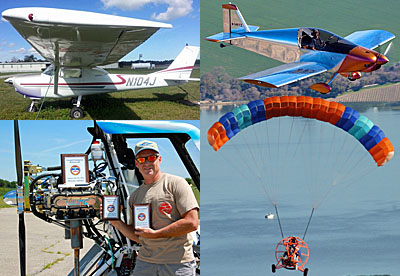 Viking offers a bit more power than the Continental or Rotax engines that lift so many Light-Sport Aircraft in the USA and around the world. UL Power can provide several engines with even more power but Viking prides itself on the performance achieved by their attractive powerplants. The Florida company reported that a Cessna 150 using a Viking engine with a custom cowling can cruise at 135 mph even without wheelpants. That's impressive. I once owned a Cessna 150 with a 150-horsepower Lycoming engine that didn't cruise that fast (though it did empty the standard fuel tanks in a couple hours). One builder of a Van's RV-12 sent airspeed indicator photo proof of cruising 145 miles an hour with the Viking, though we didn't hear the atmospheric conditions at the time. A Sonex reportedly can achieve 170 mph in the speedy, low-cost design from Oshkosh Wisconsin and a Just Aircraft model likewise sent a photo of his ASI showing 115 mph. On the other end of the spectrum, at least one powered parachute operator fitted the Viking ... but speed isn't a factor. Powered parachute speeds are dictated by the canopy wing, not engine power. The Florida engine maker reports fitting 32 air frames in their five years of existence. See our video for
Viking offers a bit more power than the Continental or Rotax engines that lift so many Light-Sport Aircraft in the USA and around the world. UL Power can provide several engines with even more power but Viking prides itself on the performance achieved by their attractive powerplants. The Florida company reported that a Cessna 150 using a Viking engine with a custom cowling can cruise at 135 mph even without wheelpants. That's impressive. I once owned a Cessna 150 with a 150-horsepower Lycoming engine that didn't cruise that fast (though it did empty the standard fuel tanks in a couple hours). One builder of a Van's RV-12 sent airspeed indicator photo proof of cruising 145 miles an hour with the Viking, though we didn't hear the atmospheric conditions at the time. A Sonex reportedly can achieve 170 mph in the speedy, low-cost design from Oshkosh Wisconsin and a Just Aircraft model likewise sent a photo of his ASI showing 115 mph. On the other end of the spectrum, at least one powered parachute operator fitted the Viking ... but speed isn't a factor. Powered parachute speeds are dictated by the canopy wing, not engine power. The Florida engine maker reports fitting 32 air frames in their five years of existence. See our video for 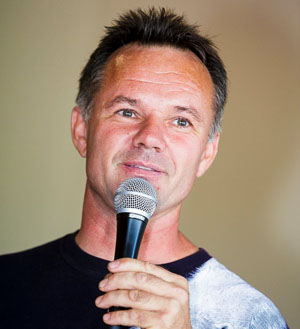 Jan Eggenfellner (photo) is the designer of the Viking Aircraft Engine. For 15 years, from 1994 to 2009, he built and sold aircraft powerplants based on Subaru engines. His goal was to hold down the cost of engines, which as any homebuilder knows, can be a significant investment. By his own telling, a low profit margin and a worsening national economy drove him to bankruptcy in 2009. He wrote, "Some customers lost money. I personally lost everything, providing refunds until no money was left." In 2010, he restarted his engine business based on a Honda block and remaining Subaru parts. "Some interest was gained by showing the engine at a local airshow for Light-Sport Aircraft," he wrote. "An initial cost of $9,900 brought enough customers onboard to form a new company." The Viking engine project was started and financing secured. Today, Jan reported, "Viking Aircraft Engines, LLC is a sound company with 11 people actively working to produce engines in Florida." Reflecting on the earlier enterprise, he admits, "I am sorry that my previous company was unable to survive. I have some critics." He requests that potential customers "ask any Viking Aircraft Engine owner" and to that end, he provides
Jan Eggenfellner (photo) is the designer of the Viking Aircraft Engine. For 15 years, from 1994 to 2009, he built and sold aircraft powerplants based on Subaru engines. His goal was to hold down the cost of engines, which as any homebuilder knows, can be a significant investment. By his own telling, a low profit margin and a worsening national economy drove him to bankruptcy in 2009. He wrote, "Some customers lost money. I personally lost everything, providing refunds until no money was left." In 2010, he restarted his engine business based on a Honda block and remaining Subaru parts. "Some interest was gained by showing the engine at a local airshow for Light-Sport Aircraft," he wrote. "An initial cost of $9,900 brought enough customers onboard to form a new company." The Viking engine project was started and financing secured. Today, Jan reported, "Viking Aircraft Engines, LLC is a sound company with 11 people actively working to produce engines in Florida." Reflecting on the earlier enterprise, he admits, "I am sorry that my previous company was unable to survive. I have some critics." He requests that potential customers "ask any Viking Aircraft Engine owner" and to that end, he provides 
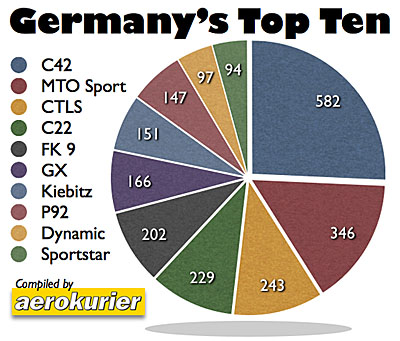 Much of what we hear and know about airplane populations is centered on America. Yet in the world of sport and recreational aviation, the rest of the world equates to at least a 1:1 relationship, that is, for every American aircraft flying, many experts agree another flies internationally. It may be more significant than that ... consider Germany.
In mid-August, our friends at Aerokurier, Germany's leading aviation magazine, assembled an
Much of what we hear and know about airplane populations is centered on America. Yet in the world of sport and recreational aviation, the rest of the world equates to at least a 1:1 relationship, that is, for every American aircraft flying, many experts agree another flies internationally. It may be more significant than that ... consider Germany.
In mid-August, our friends at Aerokurier, Germany's leading aviation magazine, assembled an 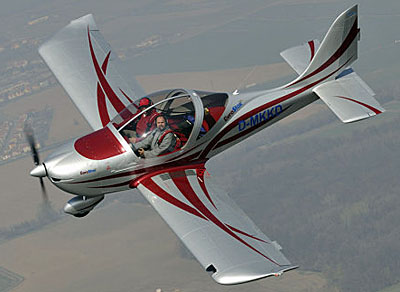 #10 — Evektor Eurostar (94 flying) — Built by
#10 — Evektor Eurostar (94 flying) — Built by 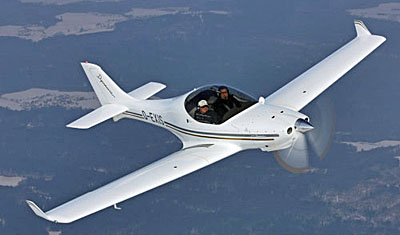 #9 — AeroSpool Dynamic (97 flying) — It's fast and belongs to the ultralight beauties at the sky. Built in Slovakia WT9 Dynamic is the epitome of a sporty composite low-wing monoplane. Capable of more than 200 km/h (125 mph) it excels at cross country flying, is comfortable, and can even tow gliders. Dynamic's flight characteristics are exemplary processing. |||| Dynamic in fixed gear form has some U.S. models flying but after Sport Aircraft Works left the business sales slowed to a stop and it never entered the Top-20 of the American LSA market.
#9 — AeroSpool Dynamic (97 flying) — It's fast and belongs to the ultralight beauties at the sky. Built in Slovakia WT9 Dynamic is the epitome of a sporty composite low-wing monoplane. Capable of more than 200 km/h (125 mph) it excels at cross country flying, is comfortable, and can even tow gliders. Dynamic's flight characteristics are exemplary processing. |||| Dynamic in fixed gear form has some U.S. models flying but after Sport Aircraft Works left the business sales slowed to a stop and it never entered the Top-20 of the American LSA market.
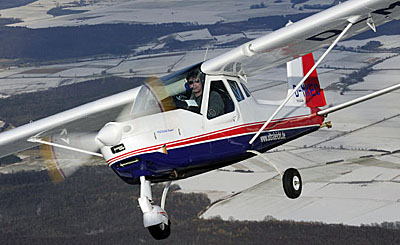 #8 — P92 (147 flying) —
#8 — P92 (147 flying) — 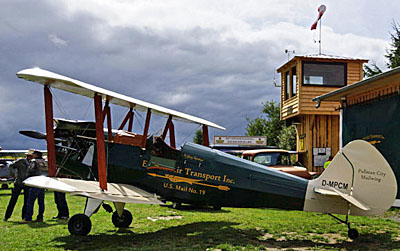 #7 — Kiebitz (151 flying) — The biplane from designer Michael Platzer has a huge following in Germany. Hardly any other ultralight gives so much fun flying in an open cockpit. To win this jewel, owners must either build it or seek one from the used market. Only plans and individual parts are offered, however, for many the effort is worthwhile. |||| Kiebitz has no U.S. market presence yet given the interest in vintage designs like the many Cubalikes, perhaps some interest can develop. On the other hand, Americans already have many choices in the world of homebuilt vintage aircraft so we may never see a Kiebitz in the USA.
#7 — Kiebitz (151 flying) — The biplane from designer Michael Platzer has a huge following in Germany. Hardly any other ultralight gives so much fun flying in an open cockpit. To win this jewel, owners must either build it or seek one from the used market. Only plans and individual parts are offered, however, for many the effort is worthwhile. |||| Kiebitz has no U.S. market presence yet given the interest in vintage designs like the many Cubalikes, perhaps some interest can develop. On the other hand, Americans already have many choices in the world of homebuilt vintage aircraft so we may never see a Kiebitz in the USA.
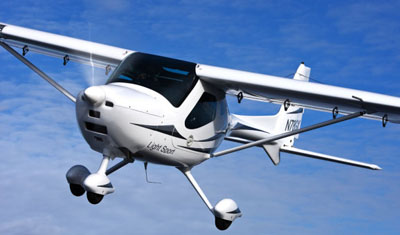 #6 — Remos GX (166 flying) — Remos Aircraft started in the mid-1990s with the introduction of its composite high wing G-3 that became popular with many ultralight pilots. Professionally produced and easy to fly this ultralight earned an excellent reputation in the industry. Several years ago, the company offered an updated GX version, which was proceeding toward European LSA approval [a more complicated and costly process than in the USA]. After a difficult time in recent years, production restarted in 2013. |||| Even after stalling badly following a tremendous promotional push, Remos still owns the #7 spot in the American LSA ranking, although reports of added financial challenge continue to dog the company. The airplane was marketed more heavily than any other LSA brand and won many happy customers.
#6 — Remos GX (166 flying) — Remos Aircraft started in the mid-1990s with the introduction of its composite high wing G-3 that became popular with many ultralight pilots. Professionally produced and easy to fly this ultralight earned an excellent reputation in the industry. Several years ago, the company offered an updated GX version, which was proceeding toward European LSA approval [a more complicated and costly process than in the USA]. After a difficult time in recent years, production restarted in 2013. |||| Even after stalling badly following a tremendous promotional push, Remos still owns the #7 spot in the American LSA ranking, although reports of added financial challenge continue to dog the company. The airplane was marketed more heavily than any other LSA brand and won many happy customers.
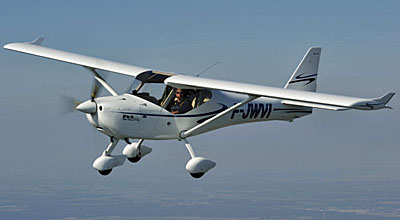 #5 — FK 9 (202 flying) — With the FK 9 Peter and his father Otto Funk [who died in 2014] presented their first FK 9 at Aero 1989 as one of the first "cabin class" ultralights replacing earlier aircraft that were far more basic. Today, the high wing is a model of success that is enjoys great popularity with many clubs and flight schools in Germany. New model innovations ensure continued success in the market. Older models are on the second hand market remain extremely popular. Today, the aircraft is built by FK-Lightplanes in Poland. |||| FK 9 enjoys market presence and current representation by
#5 — FK 9 (202 flying) — With the FK 9 Peter and his father Otto Funk [who died in 2014] presented their first FK 9 at Aero 1989 as one of the first "cabin class" ultralights replacing earlier aircraft that were far more basic. Today, the high wing is a model of success that is enjoys great popularity with many clubs and flight schools in Germany. New model innovations ensure continued success in the market. Older models are on the second hand market remain extremely popular. Today, the aircraft is built by FK-Lightplanes in Poland. |||| FK 9 enjoys market presence and current representation by 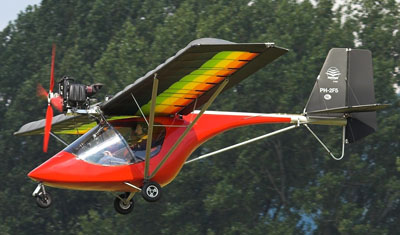 #4 — C22 (229 flying) — Germany's ultralight classic C22 has a loyal following to this day. Since the 1980s the model has stayed on the market and many still authorized aircraft remain active. From today's perspective, flight characteristics and comfort may seem rather spartan, but real ultralight fans love the original flying with the proven tube & Dacron construction from Comco Ikarus based in the south of Germany. [Note that Comco Ikarus also owns the #1 position in the market making this company Germany's clear leader after many years.] |||| No C22s are flying in the USA, nor has the German market leading C42 found many customers. The C22 is very similar to the
#4 — C22 (229 flying) — Germany's ultralight classic C22 has a loyal following to this day. Since the 1980s the model has stayed on the market and many still authorized aircraft remain active. From today's perspective, flight characteristics and comfort may seem rather spartan, but real ultralight fans love the original flying with the proven tube & Dacron construction from Comco Ikarus based in the south of Germany. [Note that Comco Ikarus also owns the #1 position in the market making this company Germany's clear leader after many years.] |||| No C22s are flying in the USA, nor has the German market leading C42 found many customers. The C22 is very similar to the 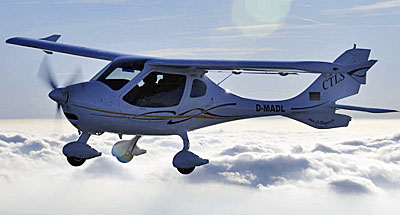 #3 — CTLS (243 flying) — From generation to generation the CT series from
#3 — CTLS (243 flying) — From generation to generation the CT series from 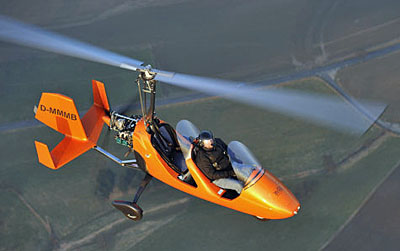 #2 — MTO Sport (346 flying) — This gyroplane is a case of the right product at the right time. In 2004, when the first MT-03 was first built, CEO Otmar Birkner had no idea he would trigger a surprising boom with gyroplanes. Many pilots love to be in the open cockpit feel the wind in your hair and to experience the flying dynamics of an autogyro. Today AutoGyro from the north of Germany is the world's leader in the gyro business. The MT-03 and its successor MTO Sport end up together in second place in Germany's registration statistics. |||| AutoGyro and other gyro providers operate in America but as FAA cannot seem to overcome their own rules, these popular planes must be built as Experimental Amateur Built (the 51% rule). If FAA ever catches up with the trend, look for more gyros to be flying as Americans seems to like the fully enclosed two seaters in tandem and side by side form.
#2 — MTO Sport (346 flying) — This gyroplane is a case of the right product at the right time. In 2004, when the first MT-03 was first built, CEO Otmar Birkner had no idea he would trigger a surprising boom with gyroplanes. Many pilots love to be in the open cockpit feel the wind in your hair and to experience the flying dynamics of an autogyro. Today AutoGyro from the north of Germany is the world's leader in the gyro business. The MT-03 and its successor MTO Sport end up together in second place in Germany's registration statistics. |||| AutoGyro and other gyro providers operate in America but as FAA cannot seem to overcome their own rules, these popular planes must be built as Experimental Amateur Built (the 51% rule). If FAA ever catches up with the trend, look for more gyros to be flying as Americans seems to like the fully enclosed two seaters in tandem and side by side form. 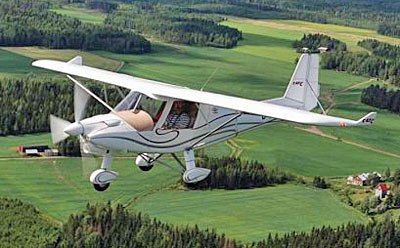 #1 — C42 (582 flying) — Germany's most popular ultralight comes from the south of Germany. C42 by Comco Ikarus secures first place with 582 licensed copies of this tube & Dacron, high wing monoplane. It has been refined repeatedly over the years and currently the manufacturer produces three versions: C42A, C42B and C42C. The aircraft is very easy to use and is widely used by flying clubs and their flight schools. |||| The clear king of ultralights in Germany has 70% more aircraft registered than the number two producer and represents more than 25% of Germany's Top-10, a stronger position than even the top two U.S. LSA producers put together. While Comco Ikarus has attempted to gain an American foothold, exhibiting at big events such as AirVenture in past years, the company has never found either the right representation nor market reception, though admittedly the U.S. market is crowded with great competition for customer attention.
As you can see, the Germany and American markets have their differences but also enjoy great similarity. Germany is one of the very strongest light aircraft markets outside the U.S., trailed in approximate order by the Czech Republic, France, Britain, Spain, Italy and others. The American market remains the world's largest for light aircraft of all types, but in the world of sport and recreation is closely trailed by other countries.
#1 — C42 (582 flying) — Germany's most popular ultralight comes from the south of Germany. C42 by Comco Ikarus secures first place with 582 licensed copies of this tube & Dacron, high wing monoplane. It has been refined repeatedly over the years and currently the manufacturer produces three versions: C42A, C42B and C42C. The aircraft is very easy to use and is widely used by flying clubs and their flight schools. |||| The clear king of ultralights in Germany has 70% more aircraft registered than the number two producer and represents more than 25% of Germany's Top-10, a stronger position than even the top two U.S. LSA producers put together. While Comco Ikarus has attempted to gain an American foothold, exhibiting at big events such as AirVenture in past years, the company has never found either the right representation nor market reception, though admittedly the U.S. market is crowded with great competition for customer attention.
As you can see, the Germany and American markets have their differences but also enjoy great similarity. Germany is one of the very strongest light aircraft markets outside the U.S., trailed in approximate order by the Czech Republic, France, Britain, Spain, Italy and others. The American market remains the world's largest for light aircraft of all types, but in the world of sport and recreation is closely trailed by other countries.
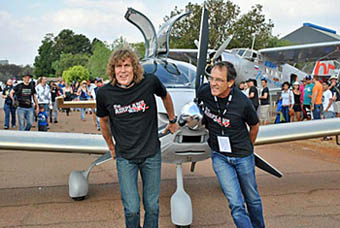 A couple days ago I wrote about the Sling 4-4-40 Challenge. I believe this to be of interest for a couple reasons. One is the fast build at an airshow ... much like the intense interest surrounding EAA's
A couple days ago I wrote about the Sling 4-4-40 Challenge. I believe this to be of interest for a couple reasons. One is the fast build at an airshow ... much like the intense interest surrounding EAA's 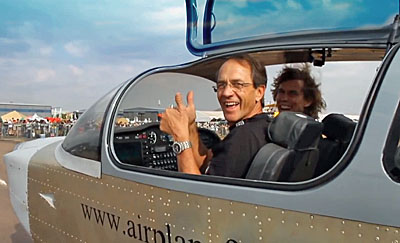 The team consisted of highly skilled workers, and even some marketing, admin and catering staff. (Good heavens! They let the marketing guys work on this ... that's brave of them!) TAF reported their team worked around the clock, with the day and night being split into 10 and 14 hour shifts, respectively. On Day 1, the center and rear fuselage were constructed and joined, the gear and undercarriage were assembled, and the engine was wired and made ready for installation. The handover to the night shift went seamlessly, TAF said, with a half hour handover period that saw 32 people working on the plane at once. The night crew then worked to get the fuselage on its wheels, engine and propeller mounted, and wings three quarters of the way complete. On Day 2, team members wired the engine and panel, the ballistic recovery parachute was installed, and the wings and empennage were nearly completed.
The team consisted of highly skilled workers, and even some marketing, admin and catering staff. (Good heavens! They let the marketing guys work on this ... that's brave of them!) TAF reported their team worked around the clock, with the day and night being split into 10 and 14 hour shifts, respectively. On Day 1, the center and rear fuselage were constructed and joined, the gear and undercarriage were assembled, and the engine was wired and made ready for installation. The handover to the night shift went seamlessly, TAF said, with a half hour handover period that saw 32 people working on the plane at once. The night crew then worked to get the fuselage on its wheels, engine and propeller mounted, and wings three quarters of the way complete. On Day 2, team members wired the engine and panel, the ballistic recovery parachute was installed, and the wings and empennage were nearly completed.
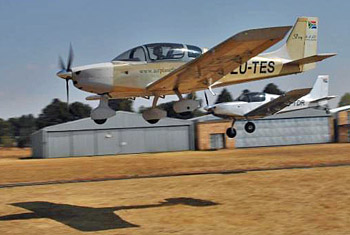 With 45 minutes to go on Day 3, Sling 4-4-40 was rolled out of its build area, both wings were attached, landing and strobe lights were connected and working, and the avionics were fired up. As the plane was wheeled out for a celebratory team photo (nearby), company co-founder James Pitman pointed out that it took him and Mike four years to build the first Sling. Day 4 involved a dual inspection and final paperwork. "Support from the crowds was fantastic and [all day] hordes of people crowded around the plane." Mike Blyth turned the key and the
With 45 minutes to go on Day 3, Sling 4-4-40 was rolled out of its build area, both wings were attached, landing and strobe lights were connected and working, and the avionics were fired up. As the plane was wheeled out for a celebratory team photo (nearby), company co-founder James Pitman pointed out that it took him and Mike four years to build the first Sling. Day 4 involved a dual inspection and final paperwork. "Support from the crowds was fantastic and [all day] hordes of people crowded around the plane." Mike Blyth turned the key and the 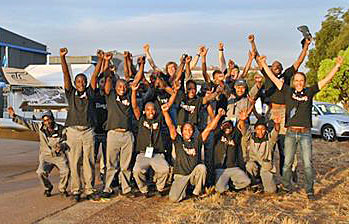 The following day Sling 4 took center stage at the Africa Aerospace show. South Africa tail number ZU-TES was assigned to and affixed to the plane and it took to the skies. The plane performed flawlessly and put on a great show for all in attendance. The Sling was then flown back to The Airplane Factory's home base and was received with warm cheers from the entire staff (video below). TAF observed the 4-4-40 Challenge was one of many accomplishments already achieved by company. Mike and James flew the Sling 2 prototype around the world
The following day Sling 4 took center stage at the Africa Aerospace show. South Africa tail number ZU-TES was assigned to and affixed to the plane and it took to the skies. The plane performed flawlessly and put on a great show for all in attendance. The Sling was then flown back to The Airplane Factory's home base and was received with warm cheers from the entire staff (video below). TAF observed the 4-4-40 Challenge was one of many accomplishments already achieved by company. Mike and James flew the Sling 2 prototype around the world 
